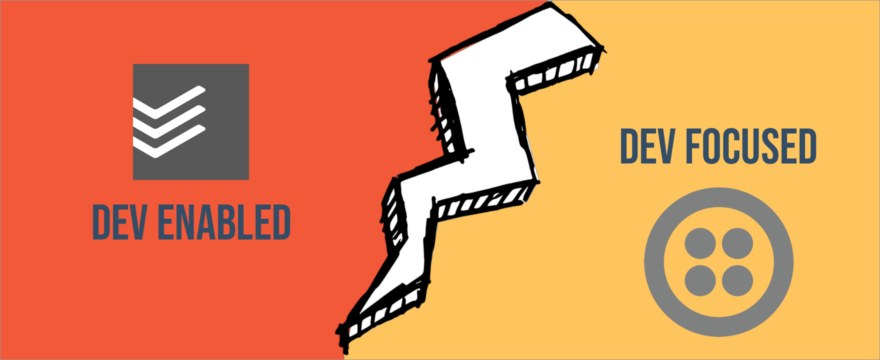One of the first things I do each day is open Todoist on my phone or laptop. It’s an app that holds my task list, helps me set priorities, and tracks my productivity. There’s also a Todoist API, which I’ve used for a few automations that make me even more productive. I’m a developer, but it was not the developer features that attracted me to Todoist in the first place.
The story above could be repeated for many SaaS tools we all use. Almost every software service provides an API—email marketing, analytics, CRMs, and lead generation tools to name a few categories—but the presence of developer features does not mean developers are a core audience.
In this post, we’ll break down the different levels of developer marketing and what developer content is needed for each.
The Developer Marketing Continuum
Your marketing audience and the developers who implement your technology are not necessarily the same. At what point developers become involved will determine where you end up on the Developer Marketing Continuum.

Let’s take a look at each level:
- Developer-enabled: When it’s time to finalize an integration, developers implement a product purchased by someone else.
- Developer-consulted: Developers don’t discover the product, but they’re consulted at some point during the consideration process.
- Developer-supported: While the product may solve non-developer problems, developers have a vested interest in early involvement.
- Developer-championed: Still involved early, developers typically bring the solution to others in the company for consideration.
- Developer-focused: Sometimes called developer-first, your customers are individual developers, so you want to reach them directly.
No matter where on the continuum your product lies, you’ll need some developer content. However, the farther right you are will require marketing activities aimed at developers.
Let’s see what marketing level you’ll need at each of these levels.
Marketing Activity on the Continuum
Your audience, product, and company stage are the primary factors in the marketing activities required. That said, this table provides a general idea of what’s needed based on where your product lies on the developer marketing continuum.
| Enabled | Consulted | Supported | Championed | Focused | |
|---|---|---|---|---|---|
| Developer Experience | Just docs | Good Enough | Good | Great | Great |
| Marketing Audience | Non-developers | Non-developers | Mix | Developers | Developers |
| Blog post types | Non-technical | Non-technical | Mix | Technical | Technical |
| Developer Relations | Unlikely | Maybe | Maybe | Likely | Required |
| Developer Events | Few | Few | Sometimes | Often | Frequent |
Developer-focused and developer-championed products will need a lot of all activities. By contrast, developer-enabled and developer-consulted products should provide developer documentation, but otherwise focus on other audiences for marketing. Directly in the middle, developer-supported products may lean one way or the other based on the technical level of the audience and stage of the company.
Identify Developer Needs for Your Product
It can be difficult to clearly see what’s needed from within your own product. Developer companies all across the continuum have worked with the EveryDeveloper team to get a fresh view of their developer marketing activities. See how you can work with EveryDeveloper.
